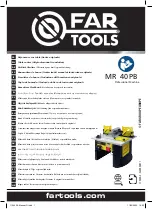
B-6
Cisco IE 3000 Switch Hardware Installation Guide
Appendix B Installation In a Hazardous Environment
North American Hazardous Location Approval
Caution
Proper ESD protection is required whenever you handle Cisco equipment. Installation and
maintenance personnel should be properly grounded by using ground straps to eliminate the risk of
ESD damage to the switch.
Do not touch connectors or pins on component boards. Do not touch circuit components inside the
switch. When not in use, store the equipment in appropriate static-safe packaging.
•
Make sure that all connectors and caps are securely tightened to properly seal the connections
against leaks and to maintain IP enclosure-type requirements.
•
Personnel responsible for the application of safety-related programmable electronic systems (PES)
shall be aware of the safety requirements in the application of the system and shall be trained in
using the system.
•
This product is grounded through the DIN rail to chassis ground. Use zinc-plated yellow-chromate
steel DIN rail to assure proper grounding. The use of other DIN rail materials (such as aluminum,
plastic, and so on) that can corrode, oxidize, or are poor conductors can result in improper or
intermittent grounding. Secure the DIN rail to the mounting surface approximately every 7.8 in. (200
mm), and use end-anchors appropriately.
When determining where to place the switch, observe these guidelines:
•
Before installing the switch, first verify that the switch is operational by powering it on and running
POST. Follow the procedures in the
“Verifying Switch Operation” section on page 2-13
•
For 10/100 ports and 10/100/1000 ports, the cable length from a switch to an attached device cannot
exceed 328 feet (100 meters).
•
For 100BASE-FX fiber-optic ports, the cable length from a switch to an attached device cannot
exceed 6562 ft (2 km).
•
For 100BASE-X SFP ports, cable length supported is dependent on the type of SFP transceiver
installed.
•
Operating environment is within the ranges listed in
Appendix A, “Technical Specifications.”
•
Clearance to front and rear panels meets these conditions:
–
Front-panel LEDs can be easily read.
–
Access to ports is sufficient for unrestricted cabling.
–
Front-panel direct current (DC) power and relay connector is within reach of the connection to
the DC power source.
•
Airflow around the switch and through the vents is unrestricted. To prevent the switch from
overheating, there must be the following minimum clearances:
–
Top and bottom: 4.13 in. (105 mm)
–
Exposed side (not connected to the module): 3.54 in. (90 mm)
–
Front: 2.56 in. (65 mm)
•
Temperature surrounding the unit does not exceed 140°F (60°C).
















































